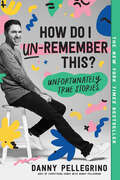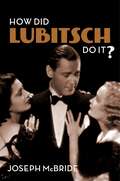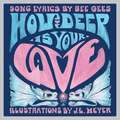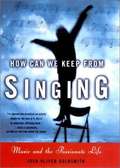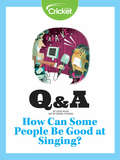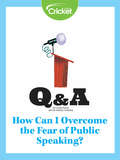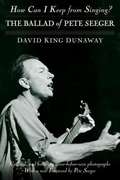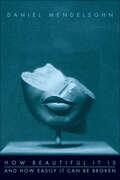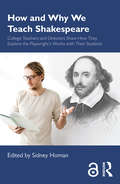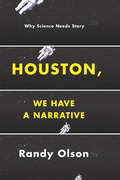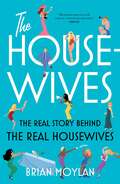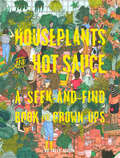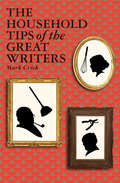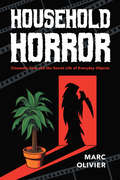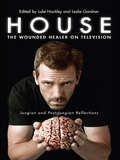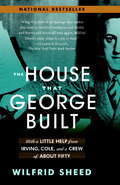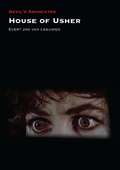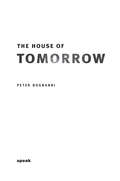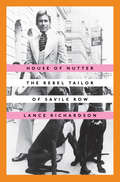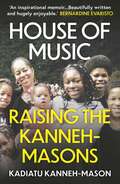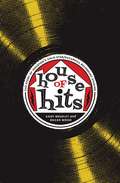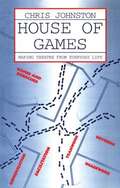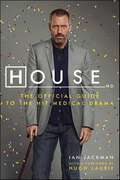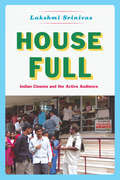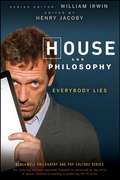- Table View
- List View
How Do I Un-Remember This?: Unfortunately True Stories
by Danny PellegrinoFrom the host of Everything Iconic with Danny Pellegrino comes a collection of stories you'll be glad didn't happen to you. <p><p>Think of the most embarrassing thing that's ever happened to you. Was it the time your high school cheer squad taunted you in front of the entire town? Was it the time your best friend's mom caught you streaking in all your naked, self-conscious glory? What about the time you accidentally threw a tooth at your dry cleaner or took an urn into Kohl's for some holiday shopping? <p><p>For Danny Pellegrino, the answer is all of the above. Growing up as a closeted gay kid in small-town Ohio wasn't easy, and Danny has the stories to prove it. But coming of age in the 90s still meant something magical to Danny. The music, film, and celebrity moments of his youth were truly iconic, and his love for all things pop culture connected him to a world larger than the one he knew in the suburban Midwest. And through all the pains of growing up, Danny could always look to that world for hope—whether that meant bingeing The Nanny until he had the confidence of Fran Fine, belting out Brandy songs until his heartaches were healed, or watching semi-clothed Ryan Phillippe scenes until his cheeks burned from blushing. <p><p>With refreshing honesty and jaw-dropping absurdity, Danny invites readers to experience his most formative moments in life—from his hometown in Ohio to his hit podcast and career in entertainment today. <p><p>How Do I Un-Remember This? is an unfiltered and all-too-relatable glimpse into Danny's life and the heartfelt and hilarious moments that shaped it. Although he wouldn't change them for the world, these stories are—unfortunately—true. <p> <b>New York Times Bestseller</b>
How Did Lubitsch Do It?
by Joseph McBrideOrson Welles called Ernst Lubitsch (1892–1947) “a giant” whose “talent and originality are stupefying.” Jean Renoir said, “He invented the modern Hollywood.” Celebrated for his distinct style and credited with inventing the classic genre of the Hollywood romantic comedy and helping to create the musical, Lubitsch won the admiration of his fellow directors, including Alfred Hitchcock and Billy Wilder, whose office featured a sign on the wall asking, “How would Lubitsch do it?” Despite the high esteem in which Lubitsch is held, as well as his unique status as a leading filmmaker in both Germany and the United States, today he seldom receives the critical attention accorded other major directors of his era.How Did Lubitsch Do It? restores Lubitsch to his former stature in the world of cinema. Joseph McBride analyzes Lubitsch’s films in rich detail in the first in-depth critical study to consider the full scope of his work and its evolution in both his native and adopted lands. McBride explains the “Lubitsch Touch” and shows how the director challenged American attitudes toward romance and sex. Expressed obliquely, through sly innuendo, Lubitsch’s risqué, sophisticated, continental humor engaged the viewer’s intelligence while circumventing the strictures of censorship in such masterworks as The Marriage Circle, Trouble in Paradise, Design for Living, Ninotchka, The Shop Around the Corner, and To Be or Not to Be. McBride’s analysis of these films brings to life Lubitsch’s wit and inventiveness and offers revealing insights into his working methods.
How Deep Is Your Love: A Children's Picture Book
by Bee GeesA majestic picture book based on the Bee Gees's classic love song "How deep is your love? I really mean to learn 'Cause we're living in a world of fools Breaking us down When they all should let us be We belong to you and me . . ." How Deep Is Your Love is a fantastical picture book based on one of the Bee Gees's biggest hits. The song topped the Billboard Hot 100 chart, remaining in the top ten for seventeen weeks, and won the band's first of eight GRAMMY awards. With lyrics by the Bee Gees and illustrations by J.L. Meyer, the picture book tells the tale of two bunny mermaids who meet on a rock and descend into the water together. As the bunnies escape traps, skirt around nets and hooks, and protect each other in this thrilling adventure, they realize how deep their love is. Meyer's imaginative story compliments the hit song perfectly and will delight children and adults alike.
How Can We Keep from Singing: Music and the Passionate Life
by Joan Oliver GoldsmithThe author has been a member of the Minneapolis/St. Paul Symphony Chorus for eight years, and has a lifelong love of choral singing. This book combines memoir with far-ranging reflections on singing, friendship, the corporate world, romantic love, and much more. Goldsmith writes beautifully and her words capture the beauty and exhilaration of singing, which she considers a spiritual experience.
How Can Some People Be Good at Singing?
by Lizzie WadeSome people are better at singing than others. Why is that? A researcher explains why some people love doing karaoke, and others simply can't do it.
How Can I Overcome the Fear of Public Speaking?
by Lizzie WadeSome people are afraid of public speaking more than others. Learn about some surprising ways to overcome stage fright.
How Can I Keep from Singing?: The Ballad of Pete Seeger
by David King DunawayHow Can I Keep from Singing? is the compelling story of how the son of a respectable Puritan family became a consummate performer and American rebel. Updated with new research and interviews, unpublished photographs, and thoughtful comments from Pete Seeger himself, this is an inside history of the man Carl Sandburg called "America's Tuning Fork." In the only biography on Seeger, David Dunaway parts the curtains on his life. Who is this rail-thin, eighty-eight-year-old with the five-string banjo, whose performances have touched millions of people for more than seven decades? Bob Dylan called him a saint. Joan Baez said, "We all owe our careers to him." But Seeger's considerable musical achievements were overshadowed by political controversy when he became perhaps the most blacklisted performer in American history. He was investigated for sedition, harassed by the FBI and the CIA, picketed, and literally stoned by conservative groups. Still, he sang. Today, Seeger remains an icon of conscience and culture, and his classic antiwar songs, sung by Bruce Springsteen and millions of others, live again in the movement against foreign wars. His life holds lessons for surviving repressive times and for turning to music to change the world. "This biography is a beauty. It captures not only the life of the bard but the world of which he sings." --Studs Terkel "A fine and meticulous biography ... Dunaway has taken [Seeger's] materials and woven them into a detailed, interesting, and well-written narrative of a most fascinating life." -American Music. "An extraordinary tale of an extraordinary man [that] will intrigue not only his legions of followers but everyone interested in one man's battles and victories." -Chicago Sun-Times.
How Beautiful It Is And How Easily It Can Be Broken: Essays
by Daniel MendelsohnWhether he's on Broadway or at the movies, considering a new bestseller or revisiting a literary classic, Daniel Mendelsohn's judgments over the past fifteen years have provoked and dazzled with their deep erudition, disarming emotionality, and tart wit. Now How Beautiful It Is And How Easily It Can Be Broken reveals all at once the enormous stature of Mendelsohn's achievement and demonstrates why he is considered one of our greatest critics. Writing with a lively intelligence and arresting originality, he brings his distinctive combination of scholarly rigor and conversational ease to bear across eras, cultures, and genres, from Roman games to video games.His interpretations of our most talked-about films—from the work of Pedro Almodóvar to Brokeback Mountain, from United 93 and World Trade Center to 300, Marie Antoinette, and The Hours—have sparked debate and changed the way we watch movies. Just as stunning and influential are his dispatches on theater and literature, from The Producers to Jeffrey Eugenides' Middlesex, from The Lovely Bones to the works of Harold Pinter. Together these thirty brilliant and engaging essays passionately articulate the themes that have made Daniel Mendelsohn a crucial voice in today's cultural conversation: the aesthetic and indeed political dangers of imposing contemporary attitudes on the great classics; the ruinous effect of sentimentality on the national consciousness in the post-9/11 world; the vital importance of the great literature of the past for a meaningful life in the present.How Beautiful It Is And How Easily It Can Be Broken makes it clear that no other contemporary thinker is as engaged with as many aspects of our culture and its influences as Mendelsohn is, and no one practices the vanishing art of popular criticism with more acuity, humor, and feeling.
How and Why We Teach Shakespeare: College Teachers and Directors Share How They Explore the Playwright’s Works with Their Students
by Sidney HomanIn How and Why We Teach Shakespeare, 19 distinguished college teachers and directors draw from their personal experiences and share their methods and the reasons why they teach Shakespeare. The collection is divided into four sections: studying the text as a script for performance; exploring Shakespeare by performing; implementing specific techniques for getting into the plays; and working in different classrooms and settings. The contributors offer a rich variety of topics, including: working with cues in Shakespeare, such as line and mid-line endings that lead to questions of interpretation seeing Shakespeare’s stage directions and the Elizabethan playhouse itself as contributing to a play’s meaning using the "gamified" learning model or cue-cards to get into the text thinking of the classroom as a rehearsal playing the Friar to a student’s Juliet in a production of Romeo and Juliet teaching Shakespeare to inner-city students or in a country torn by political and social upheavals. For fellow instructors of Shakespeare, the contributors address their own philosophies of teaching, the relation between scholarship and performance, and—perhaps most of all—why in this age the study of Shakespeare is so important.
Houston, We Have a Narrative: Why Science Needs Story
by Randy OlsonAsk a scientist about Hollywood, and you'll probably get eye rolls. But ask someone in Hollywood about science, and they'll see dollar signs: moviemakers know that science can be the source of great stories, with all the drama and action that blockbusters require. That's a huge mistake, says Randy Olson: Hollywood has a lot to teach scientists about how to tell a story--and, ultimately, how to do science better. With Houston, We Have a Narrative, he lays out a stunningly simple method for turning the dull into the dramatic. Drawing on his unique background, which saw him leave his job as a working scientist to launch a career as a filmmaker, Olson first diagnoses the problem: When scientists tell us about their work, they pile one moment and one detail atop another moment and another detail--a stultifying procession of "and, and, and. " What we need instead is an understanding of the basic elements of story, the narrative structures that our brains are all but hardwired to look for--which Olson boils down, brilliantly, to "And, But, Therefore," or ABT. At a stroke, the ABT approach introduces momentum ("And"), conflict ("But"), and resolution ("Therefore")--the fundamental building blocks of story. As Olson has shown by leading countless workshops worldwide, when scientists' eyes are opened to ABT, the effect is staggering: suddenly, they're not just talking about their work--they're telling stories about it. And audiences are captivated. Written with an uncommon verve and enthusiasm, and built on principles that are applicable to fields far beyond science, Houston, We Have a Narrative has the power to transform the way science is understood and appreciated, and ultimately how it's done.
The Housewives: The Real Story Behind the Real Housewives
by Brian MoylanFrom Brian Moylan, the writer of Vulture’s legendary Real Housewives recaps, a table-flipping, finger-pointing, halter-topping VIP journey through reality TV’s greatest saga… <P><P>In the spring of 2006, a new kind of show premiered on Bravo: The Real Housewives of Orange County. Its stars were tanned, taut, and bedazzled; their homes were echoey California villas; and their drama was gossip-fueled, wine-drenched, and absolutely exquisite. <P><P>Fifteen seasons on, RHOC is an institution, along with The Real Housewives of New York, Atlanta, New Jersey, Miami, Potomac, and more. Over the years these ladies have done a lot more than lunch, launching thirty-one books, a cocktail line, two jail sentences, a couple supermodel daughters, Andy Cohen’s talk show career, thirty-six divorces, fourteen albums, a White House party crash, and approximately one million memes. <P><P>Brian Moylan has been there through it all, in front of the screen and behind the scenes. The writer of Vulture’s beloved series recaps, he’s here to tell us the full story, from the inside scoop on every classic throwdown to the questions we’ve always wanted to know, like—what are the housewives really like off-camera? (The same.) How much money do they make? (Lots.) He has a lot to say about the legacy and fandom of a franchise that’s near and dear to his heart, and inextricable from pop culture today. <P><P>A must-have for any fan of real drama and fake [redacted], The Housewives is the definitive companion to an American TV treasure. <P><P><b>A New York Times Best Seller</b>
Houseplants and Hot Sauce: A Seek-and-Find Book for Grown-Ups
by Sally NixonThis cheeky seek and find features illustrated scenes from the life of a modern gal—from brunch with friends to shopping for succulents—with clever and funny challenges on every page. Lenny Letter contributor Sally Nixon combines the nostalgia of visual puzzles with smart, contemporary content for a fresh and charming ebook.
The Household Tips of the Great Writers
by Mark CrickWhat would literary lions tell us about cooking, cleaning, and gardening? A three-book collection of parody and practical advice by a &“brilliant&” humorist (The Financial Times). The Household Tips of Great Writers covers all your household needs, indoors and outdoors, from pruning a rose bush with Pablo Neruda to mending a dripping tap with Jean-Paul Sartre. Throwing a tea party? Irvine Welsh has the recipe for the perfect chocolate cake, though that's not all he's cooking. Brilliant, hilarious, and always pitch-perfect, this omnibus edition of Mark Crick's wonderful books of literary pastiche will inform and entertain the most erudite of householders. Includes: Sartre&’s Sink &“This brilliantly inventive DIY manual both parodies and celebrates great authors ... Crick is a brilliant literary ventriloquist.&”—The Financial Times Kafka&’s Soup &“These literary and visual pastiches of writers and their relationships with food provide a laugh a line as they skewer their literary originals with effortless accuracy...a masterpiece.&”—The Guardian Machiavelli&’s Lawn &“Erudite and enjoyable prose, no less rewarding for its horticultural accuracy.&”—Times Literary Supplement
Household Horror: Cinematic Fear and the Secret Life of Everyday Objects (The\year's Work: Studies In Fan Culture And Cultural Theory Ser.)
by Marc OlivierA scholar examines 14 everyday objects featured in horror films and how they manifest their power and speak to society’s fears.Take a tour of the house where a microwave killed a gremlin, a typewriter made Jack a dull boy, a sewing machine fashioned Carrie’s prom dress, and houseplants might kill you while you sleep. In Household Horror, Marc Olivier highlights the wonder, fear, and terrifying dimension of objects in horror cinema. Inspired by object-oriented ontology and the nonhuman turn in philosophy, Olivier places objects in film on par with humans, arguing, for example, that a sleeper sofa is as much the star of Sisters as Margot Kidder, that The Exorcist is about a possessed bed, and that Rosemary’s Baby is a conflict between herbal shakes and prenatal vitamins. Household Horror reinvigorates horror film criticism by investigating the unfathomable being of objects as seemingly benign as remotes, radiators, refrigerators, and dining tables. Olivier questions what Hitchcock’s Psycho tells us about shower curtains. What can we learn from Freddie Krueger’s greatest accomplice, the mattress? Room by room, Olivier considers the dark side of fourteen household objects to demonstrate how the objects in these films manifest their own power and connect with specific cultural fears and concerns.“Provides a lively and highly original contribution to horror studies. As a work on cinema, it introduces the reader to films that may be less well-known to casual fans and scholars; more conspicuously, it returns to horror staples, gleefully reanimating works that one might otherwise assume had been critically “done to death” (Psycho, The Exorcist, The Shining).” —Allan Cameron, University of Auckland
House: Jungian and Post-Jungian Reflections
by Luke Hockley Leslie GardnerHouse MD is a globally successful and long-running medical drama. House: The Wounded Healer on Television employs a Jungian perspective to examine the psychological construction of the series and its namesake, Dr Gregory House. The book also investigates the extent to which the continued popularity of House MD has to do with its representation of deeply embedded cultural concerns. It is divided into three parts - Diagnosing House, Consulting House and Dissecting House, - and topics of discussion include: specific details, themes, motifs and tropes throughout the series narrative, character and visual structure the combination of performative effects, text and images of the doctor and his team the activities of the hero, the wounded healer and the puer aeternus. Offering an entirely fresh perspective on House MD, with contributions from medical professionals, academics and therapists, this book is essential reading for students and scholars of Jungian psychology. The inclusion of a glossary of Jungian terms means that this book can also be enjoyed by fans of House MD who have been seeking a more in-depth analysis of the series.
The House That George Built: With a Little Help from Irving, Cole, and a Crew of About Fifty
by Wilfrid SheedFrom Irving Berlin to Cy Coleman, from "Alexander's Ragtime Band" to "Big Spender," from Tin Pan Alley to the MGM soundstages, the Golden Age of the American song embodied all that was cool, sexy, and sophisticated in popular culture. For four glittering decades, geniuses like Jerome Kern, George Gershwin, Cole Porter, and Harold Arlen ran their fingers over piano keys, enticing unforgettable melodies out of thin air. Critically acclaimed writer Wilfrid Sheed uncovered the legends, mingled with the greats, and gossiped with the insiders. Now he's crafted a dazzling, authoritative history of the era that "tripled the world's total supply of singable tunes." It began when immigrants in New York's Lower East Side heard black jazz and blues--and it surged into an artistic torrent nothing short of miraculous. Broke but eager, Izzy Baline transformed himself into Irving Berlin, married an heiress, and embarked on a string of hits from "Always" to "Cheek to Cheek." Berlin's spiritual godson George Gershwin, in his brief but incandescent career, straddled Tin Pan Alley and Carnegie Hall, charming everyone in his orbit. Possessed of a world-class ego, Gershwin was also generous, exciting, and utterly original. Half a century later, Gershwin love songs like "Someone to Watch Over Me," "The Man I Love," and "Love Is Here to Stay" are as tender and moving as ever. Sheed also illuminates the unique gifts of the great jazz songsters Hoagy Carmichael and Duke Ellington, conjuring up the circumstances of their creativity and bringing back the thrill of what it was like to hear "Georgia on My Mind" or "Mood Indigo" for the first time. The Golden Age of song sparked creative breakthroughs in both Broadway musicals and splashy Hollywood extravaganzas. Sheed vividly recounts how Cole Porter, Richard Rodgers, Jerome Kern, and Johnny Mercer spread the melodic wealth to stage and screen. Popular music was, writes Sheed, "far and away our greatest contribution to the world's art supply in the so-called American Century." Sheed hung out with some of the great artists while they were still writing-and better than anyone, he knows great music, its shimmer, bite, and exuberance. Sparkling with wit, insight, and the grace notes of wonderful songs, The House That George Built is a heartfelt, intensely personal portrait of an unforgettable era. A delightfully charming, funny, and most illuminating portrait of songwriters and the Golden Age of American Popular Song. Mr. Sheed's carefully chosen depictions and anecdotes recapture that amazingly creative period, a moment in time in which I was so fortunate to be surrounded by all that magic." -Margaret Whiting
House of Usher (Devil's Advocates)
by Evert van LeeuwenDespite being the product of Roger Corman’s AIP exploitation studio, House of Usher enjoys a high standing. But while the impact and cult status of Corman’s Edgar Allan Poe cycle is often discussed in histories of gothic, horror, and exploitation cinema, no extended analysis and critical discussion has been published to date that explores specifically the aesthetic appeal of House of Usher. This Devil’s Advocate provides a complete study of the aesthetic appeal of Corman’s influential first Poe picture.Evert van Leeuwen explores the underlying narrative structure borrowed from Poe’s original story and shows how closely Richard Matheson’s script followed Poe’s theory of short fiction. He goes on to explore the formal techniques of allegory and symbolism employed to represent the house as a monster before focusing on Corman’s imagery, showing how the use of specific camera angles, lenses, colors, and sound effects create and sustain the simultaneously morbid and beautiful atmosphere of gothic decay. Finally, he situates horror icon Vincent Price’s performance as Roderick Usher in the context of the nineteenth-century Romantic misfit and the postwar countercultural antihero, two closely related cultural identities.
The House of Tomorrow
by Peter Bognanni* "Funny and unique . . . An honest, noisy, and raucous look at friendship and how loud music can make almost everything better." --Publishers Weekly, starred reviewSebastian Prendergast lives with his eccentric grandmother in a geodesic dome. His homeschooling has taught him much-but he's learned little about girls, junk food, or loud, angry music. Then fate casts Sebastian out of the dome, and he finds a different kind of tutor in Jared Whitcomb: a chain-smoking sixteen-year-old heart transplant recipient who teaches him the ways of rebellion. Together they form a punk band and plan to take the local church talent show by storm. But when his grandmother calls him back to the futurist life she has planned for him, he must decide whether to answer the call-or start a future of his own.
House of Nutter: The Rebel Tailor of Savile Row
by Lance RichardsonThe strange, illuminative true story of Tommy Nutter, the Savile Row tailor who changed the silhouette of men’s fashion—and his rock photographer brother, David, who captured it all on film. From an early age, there was something different about Tommy and David Nutter. Growing up in an austere apartment above a café catering to truck drivers, both boys seemed destined to lead rather humble lives in post-war London—Tommy as a civil servant, David as a darkroom technician. Yet the strength of their imagination (plus a little help from their friends) transformed them instead into unlikely protagonists of a swinging cultural revolution. In 1969, at the age of twenty-six, Tommy opened an unusual new boutique on the “golden mile” of bespoke tailoring, Savile Row. While shocking a haughty establishment resistant to change, “Nutters of Savile Row” became an immediate sensation among the young, rich, and beautiful, beguiling everyone from Bianca Jagger to the Beatles—who immortalized Tommy’s designs on the album cover of Abbey Road. Meanwhile, David’s innate talent with a camera vaulted him across the Atlantic to New York City, where he found himself in a parallel constellation of stars (Yoko Ono, Elton John) who enjoyed his dry wit almost as much as his photography. House of Nutter tells the stunning true story of two gay men who influenced some of the most iconic styles and pop images of the twentieth century. Drawing on interviews with more than seventy people—and taking advantage of unparalleled access to never-before-seen pictures, letters, sketches, and diaries—journalist Lance Richardson presents a dual portrait of brothers improvising their way through five decades of extraordinary events, their personal struggles playing out against vivid backdrops of the Blitz, an obscenity trial, the birth of disco, and the devastation of the AIDS crisis. A propulsive, deftly plotted narrative filled with surprising details and near-operatic twists, House of Nutter takes readers on a wild ride into the minds and times of two brilliant dreamers.
House of Music: Raising the Kanneh-Masons
by Kadiatu Kanneh-MasonSeven brothers and sisters. All of them classically trained musicians. One was Young Musician of the Year and performed for the royal family. The eldest has released her first album, showcasing the works of Clara Schumann. These siblings don&’t come from the rarefied environment of elite music schools, but from a state comprehensive in Nottingham. How did they do it? Their mother, Kadiatu Kanneh-Mason, opens up about what it takes to raise a musical family in a Britain divided by class and race. What comes out is a beautiful and heartrending memoir of the power of determination, camaraderie and a lot of hard work. The Kanneh-Masons are a remarkable family. But what truly sparkles in this eloquent memoir is the joyous affirmation that children are a gift and we must do all we can to nurture them.
House of Hits
by Andy Bradley Roger WoodFounded in a working-class neighborhood in southeast Houston in 1941, Gold Star/SugarHill Recording Studios is a major independent studio that has produced a multitude of influential hit records in an astonishingly diverse range of genres. Its roster of recorded musicians includes Lightnin’ Hopkins, George Jones, Willie Nelson, Bobby “Blue” Bland, Junior Parker, Clifton Chenier, Sir Douglas Quintet, 13th Floor Elevators, Freddy Fender, Kinky Friedman, Ray Benson, Guy Clark, Lucinda Williams, Beyoncé and Destiny’s Child, and many, many more. In House of Hits, Andy Bradley and Roger Wood chronicle the fascinating history of Gold Star/SugarHill, telling a story that effectively covers the postwar popular music industry. They describe how Houston’s lack of zoning ordinances allowed founder Bill Quinn’s house studio to grow into a large studio complex, just as SugarHill’s willingness to transcend musical boundaries transformed it into of one of the most storied recording enterprises in America. The authors offer behind-the-scenes accounts of numerous hit recordings, spiced with anecdotes from studio insiders and musicians who recorded at SugarHill. Bradley and Wood also place significant emphasis on the role of technology in shaping the music and the evolution of the music business. They include in-depth biographies of regional stars and analysis of the various styles of music they represent, as well as a list of all of Gold Star/SugarHill’s recordings that made the Billboard charts and extensive selected historical discographies of the studio’s recordings.
House of Games
by Chris JohnstonAn immensely valuable resource book for drama leaders, House of Games is a how-to book for building up drama troupes and keeping them creative. House of Games is sure to take its place alongside the most established drama method texts.
House, M.D.: The Official Guide to the Hit Medical Drama
by Ian JackmanThe first authorized companion to the Emmy Award-winning medical drama House, M.D., starring Hugh Laurie, House M.D:The Official Guide to the Hit Medical Drama features full backstage access to the cast and crew of the popular television series, with an Introduction by Hugh Laurie.
House Full: Indian Cinema and the Active Audience (Fieldwork Encounters and Discoveries)
by Lakshmi SrinivasIndia is the largest producer and consumer of feature films in the world, far outstripping Hollywood in the number of movies released and tickets sold every year. Cinema quite simply dominates Indian popular culture, and has for many decades exerted an influence that extends from clothing trends to music tastes to everyday conversations, which are peppered with dialogue quotes. With House Full, Lakshmi Srinivas takes readers deep into the moviegoing experience in India, showing us what it's actually like to line up for a hot ticket and see a movie in a jam-packed theater with more than a thousand seats. Building her account on countless trips to the cinema and hundreds of hours of conversation with film audiences, fans, and industry insiders, Srinivas brings the moviegoing experience to life, revealing a kind of audience that, far from passively consuming the images on the screen, is actively engaged with them. People talk, shout, whistle, cheer; others sing along, mimic, or dance; at times audiences even bring some of the ritual practices of Hindu worship into the cinema, propitiating the stars onscreen with incense and camphor. The picture Srinivas paints of Indian filmgoing is immersive, fascinating, and deeply empathetic, giving us an unprecedented understanding of the audience's lived experience--an aspect of Indian film studies that has been largely overlooked.
House and Philosophy: Everybody Lies
by Henry JacobyAn unauthorized look at the philosophical issues raised by one of today's most popular television shows. "House" is one of the top three television dramas on the air, pulling in more than 19 million viewers for each episode. This latest book in the popular Blackwell Philosophy and Pop Culture series takes a deeper look at the characters and issues raised in this Emmy Award-winning medical drama, offering entertaining answers to the fascinating ethical questions viewers have about Dr. Gregory House and his medical team.
